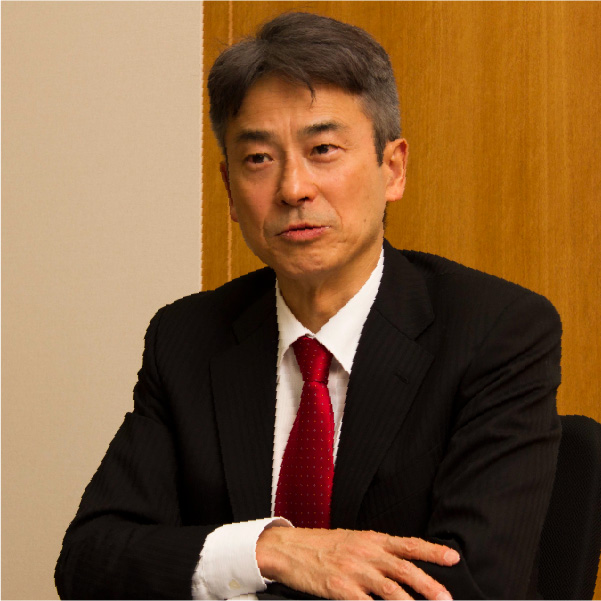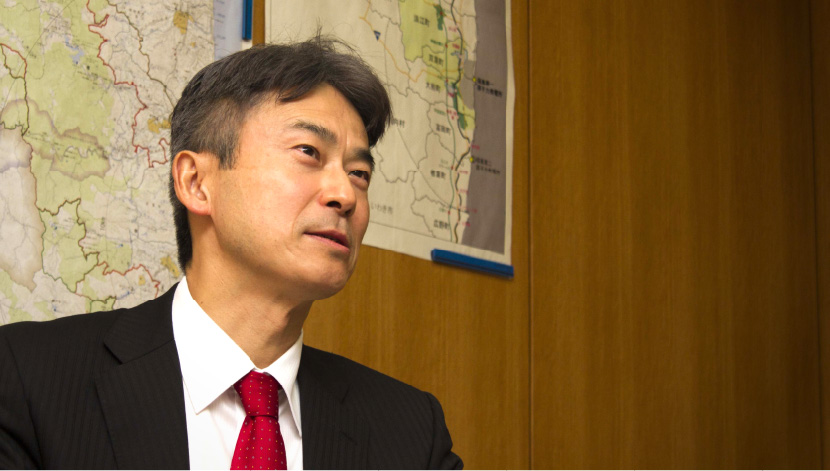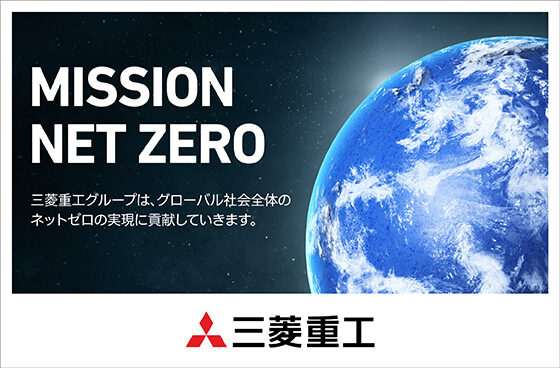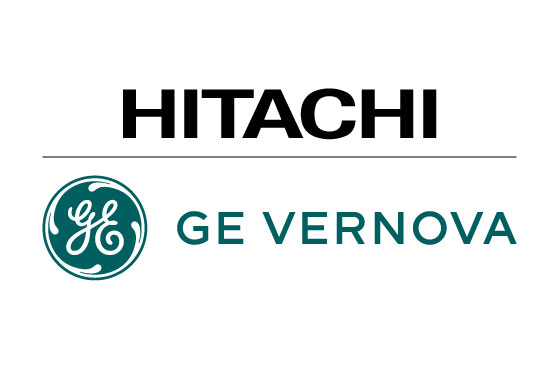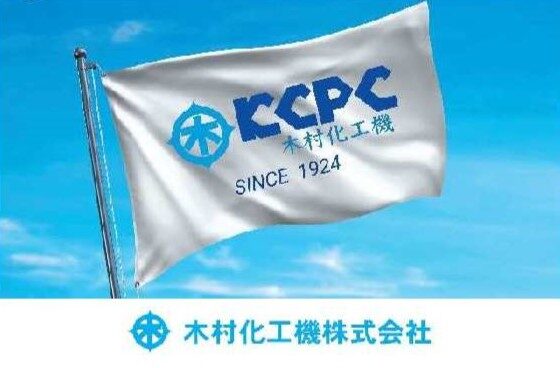Reconstruction and restoration efforts are progressing at full steam, aiming to build a region that is attractive to residents and newcomers.
With the evacuation order having been lifted in certain areas, efforts are steadily and successfully progressing to restore the industries there.
We asked Chihiro Tobe, Deputy Director General of the Reconstruction Agency’s Fukushima Reconstruction Bureau, about his thoughts on the efforts to recover and restore Fukushima and other nearby areas over the past decade, as well as their success. Various activities have been conducted to restore people’s living environment and industry, starting with soil removal and decontamination, and the evacuation order was lifted last year (2020) for all areas except those designated as difficult-to-return areas. Meanwhile, he emphasized the need to “carry out activities—promoting relocation, etc.—to invite new people to move there,” clarifying his intention to carry out activities in the future to promote relocation and settlement. He also demonstrated the Bureau’s stance of carrying out forceful measures to create an attractive region by setting up bases in the region for the development of innovative technologies and creating new industries.
– Please tell us about the current situation in the evacuation-order zones, as well as the reconstruction and support activities for evacuees.
Tobe: Already a decade has passed since the accident at the Fukushima Daiichi Nuclear Power Plants (NPPs). During that time, the areas affected by the accident have been grouped into three zones, depending on the differences in their radiation levels—evacuation order cancellation preparation zones, restricted-residence zones, and difficult-to-return zones—with a variety of reconstruction measures conducted in each.
Compensation has been extended [to residents] based on where they lived in those three zone categories, and the national government is earnestly working to remove and decontaminate the soil there, helping to restore the environment.
It was decided to first lift the evacuation orders in those areas with low radiation levels. Having carried out the removal and decontamination soil in evacuation order preparation cancellation zones, we are now endeavoring to restore the infrastructure in such areas, including those related to people’s everyday lives, jobs, and transportation.
As a result, [the restraints affecting] all the evacuation order cancellation preparation zones and restricted-residence zones were lifted as of last year (2020) .
Also, as for the six municipalities (towns and villages) where difficult-to-return zones still exist, we have conducted activities to arrange a living environment to which people can return safely in the future, with specific bases set up for reconstruction and restoration. While it will take some time for the restrictions on the difficult-to-return zones themselves to be lifted, efforts are ongoing to set up the bases so as focus the reconstruction efforts and promote the early return [of residents].
As for creating the kind of infrastructure in the disaster-stricken areas that would enable people to live there once again, there is a particularly strong need for medical care, elderly care, and welfare, and children’s educational environment is also important, so those areas have been given priority in preparing the proper environment. We have also worked to organize industrial compounds and invite companies there so as to prepare workplaces to help people get the kind of jobs that will get them back on their feet.
As for restoring the transportation system, service was brought back last year to the remaining closed-off segments of the JR East (Japan Railways East) Joban Line. Concurrent with work on the railroads, efforts have also been made to bring the area’s roads back into service, starting with such main trunk highways as the Joban Expressway and the Tohoku Central Expressway (the Soma Fukushima Road), as well as residential roads. Additionally, we have worked to get facilities ready to create an environment where people can go shopping again.
Thanks to such efforts, the evacuation order was lifted in March 2020 for all the zones except the ones designated as difficult-to-return zones. At present, the number of people (residents, etc.) who have come back to such [formerly restricted] zones has reached 14 thousand. Nevertheless, considering that the original population [for such places], as recorded in the Basic Resident Register, was a little less than 70 thousand, the reality of the situation is still quite tough, with just slightly more than one-fifth of the original number of residents having returned (including the people newly relocated there). While quite a few residents have already come back to those areas where the evacuation order was lifted at an early date, a look at the results of a survey of the intentions about returning on the part of people from the municipalities affected by the NPP disaster shows that the ratio of those never wanting to go back to their former homes again is as high as 50 to 60 percent in some cases. That stems especially from the fact that as time passes, the greater the number of people there are who end up settling down in the places to which they have evacuated, and where they now base their livelihood.
The Reconstruction Agency believes that its efforts should not stop at just organizing an environment that original inhabitants could return to, but also that it is more necessary than ever to carry out activities—promoting relocation, etc.—to invite new people to move there. We are thus preparing the necessary budget and taking steps to develop the necessary systems, with relocation and the promotion of settlement serving as the major pillars of the policy.
Starting in the next fiscal year (i.e., from April 2021), Stage 2 of the restoration plan will begin, comprising “reconstruction and creation.” While giving due consideration to the different reconstruction stage that each municipality finds itself in, efforts will progress toward further reconstruction and support.
– Explain how successful the efforts have been to restore and enable the recovery of the disaster-stricken areas affected by the nuclear accident, as well as any new issues that may have arisen.
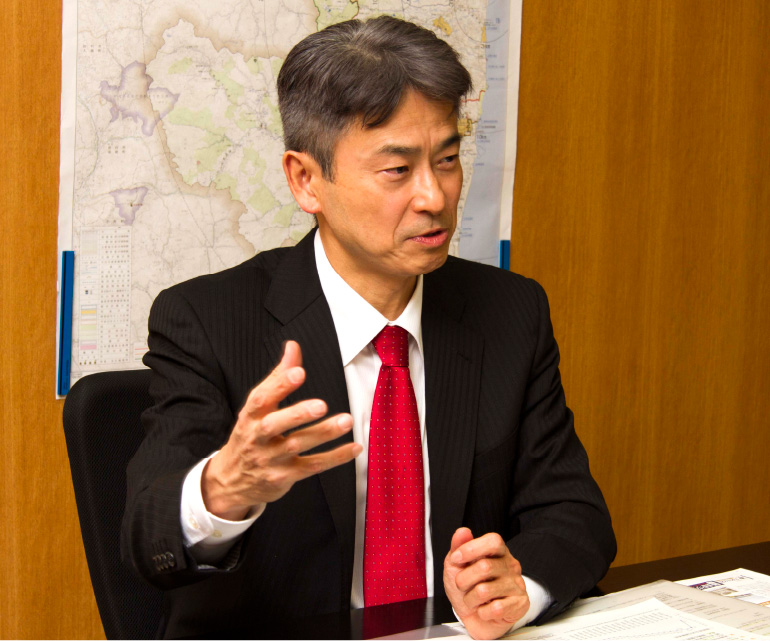
Tobe: A major thrust of the reconstruction measures is the fact that the recovery and restoration from the nuclear disaster—while reconstruction in general is something that is occurring across all of the Tohoku region, not just in Fukushima but also Iwate and Miyagi Prefectures—is an issue unique to Fukushima. Since the first order of business, obviously, is the winding down of the accident, we are implementing reactor decommissioning measures and those to reduce contaminated water, as well as to remove radioactive materials. In particular, as regards decommissioning measures, the national government has taken the initiative in implementing the medium- and long-term roadmap both safely and steadily.
Also, in reference to the organization of specific reconstruction and restoration bases within difficult-to-return zones, although the situation in each municipality (town and village) is different, our goal is to have them ready by the spring of 2022 or 2023. Each municipality is in charge of organizing the living environment for the people coming back there, and the national government, for its part, hopes to give its full support as well.
– How will the work on soil removal and decontamination progress from now on ?
Tobe: Tobe: The major precondition for people to be able to return to their homes after evacuation orders are lifted is to complete the work of soil removal and decontamination. In the work so far, large amounts of radiation-containing soil and radioactive waste have emerged; the soil and waste that had been placed in temporary storage is now being temporarily transported to the interim storage facilities in Okuma and Futaba Towns.
The total volume of the soil coming from the soil removal and decontamination in Fukushima Prefecture is expected to reach 14 million cubic meters. So far, a little more than 10 million cubic meters of soil have been transported, or some 74 percent of the expected final amount. According to the schedule, most of the work should be finished some time during the upcoming fiscal year (April 2021 to March 2022), and things are moving along as planned.
Incidentally, several thousand trucks are involved in the transportation of the soil, and safety protocols are firmly in place for their operation to prevent accidents, so as not to cause problems for local residents. No delays have occurred stemming from the coronavirus as had been feared, and work has moved forward smoothly to date.
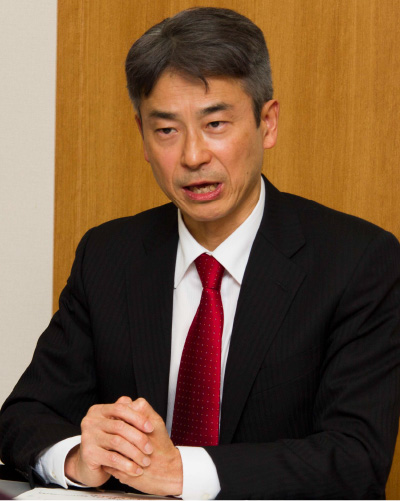
Turning Hama-dori into a Research Base for International Education
– What kind of efforts are planned for the future, especially those related to the restoration of industry and people’s livelihoods in the areas stricken by the nuclear disaster (such as the Fukushima Innovation Coast Framework)?
Tobe: Looking at the monetary value of manufactured products shipped from Fukushima Prefecture, we see that the figure for fiscal 2018 was three percent higher than the situation before the disaster. Having said that, however, the same number for Japan as a whole was 15 percent higher, so Fukushima’s performance still lags behind the national average. In particular, focusing on the twelve municipalities struck by the nuclear disaster, the percentage of recovery is only around 80 percent. Because of the current situation, we believe that restoring the prefecture’s industry is an issue of continued importance.
Fukushima Prefecture’s Hama-dori district, one of the areas stricken by the nuclear disaster, used to have a lot of energy-related businesses, such as electricity and gas, and their significant shrinkage is the main cause of its economic downturn. The soil removal and decontamination work and the reconstruction-related businesses that I mentioned earlier have taken the place of those [energy] businesses, and now account for a large share of the economy. However, such reconstruction-related enterprises, along with work related to building infrastructure to deal with tsunami and earthquakes, are drawing to a close. Reconstruction work will continue related to the nuclear disaster, but that, too, will decrease as time goes on, so it is necessary to build a new industrial foundation. Naturally, we must also foster the human resources supporting such new industries.
In addition, agriculture and fisheries had always thrived in this region, so the restoration of those industries is also an important issue to tackle. Both rely heavily on the natural environment, such as the land, so restoring them will take more time than simply inviting companies in to build factories. Only about 30 percent of farms in Fukushima have resumed business in comparison to the pre-disaster level, and in the case of the fisheries industry, that ratio does not even reach 20 percent, despite the ongoing recovery in the business that started with trial operations beginning in 2012. We at the Reconstruction Agency believe that it is imperative to continue to give firm support to the restoration of the agriculture and fisheries industries [in Fukushima].
In consideration of the current situation, the Innovation Coast Framework has been created to develop a new city for international research and industry within Fukushima, so as to give birth to new industries and employment possibilities there. In addition to what I had referred to earlier about inviting companies to Fukushima and restoring its local agricultural and fisheries industries, we will promote efforts to create new industries in the prefecture through technological development in the fields of reactor decommissioning—something that is now taking place—as well as robotics, energy, the environment, recycling, medicine, and aerospace, among others.
Technological development already happening includes work at such facilities as the Naraha Center for Remote Control Technology Development, set up in the Hama-dori area as a facility to conduct the actual testing necessary for decommissioning work [at the Fukushima Daiichi NPPs], along with the Fukushima Robot Test Field, which recreates the operational environment for robots on land, in the sea, and in the air.
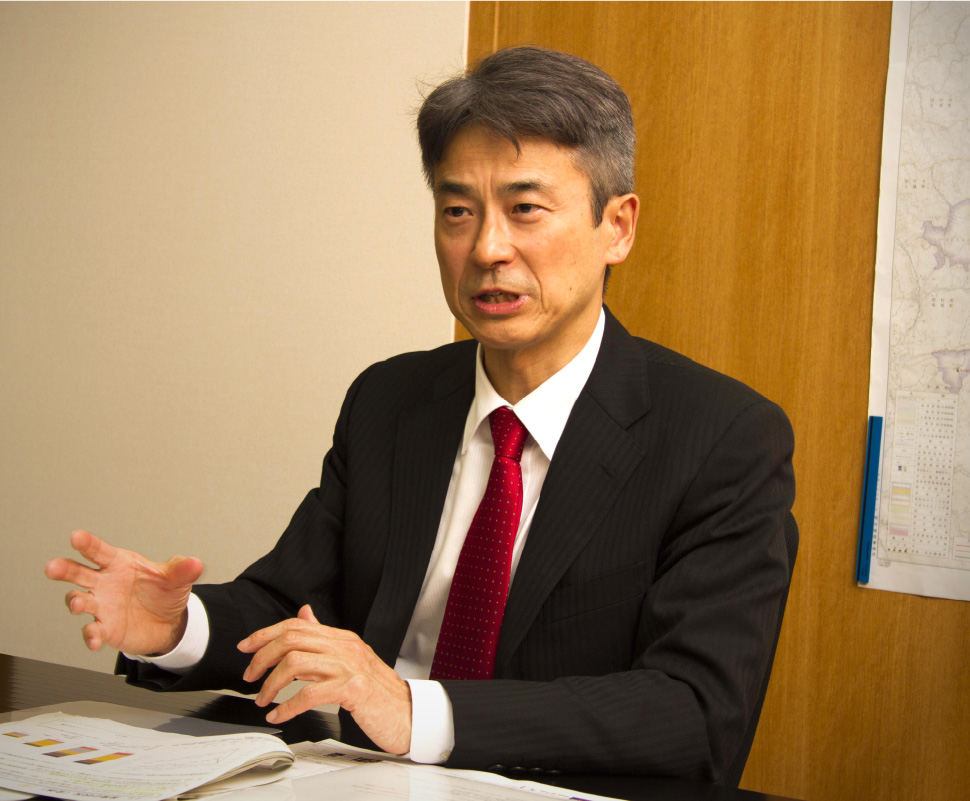
As the aim is not merely to manufacture parts and products but also to create new industries, it will be necessary to both invite and educate the necessary human resources who will support such roles. Additionally, we want to utilize the Innovation Coast Framework as a means to assist local corporations in collaborating with the new companies in advanced technological fields, with the former providing the latter with products and the necessary human resources. The establishment of an international education and research base in Fukushima is a grand vision to collect, as well as to educate, superior human resources, bringing together the wisdom of Japan and the international community to the Hama-dori district, which suffered enormous damage in the nuclear disaster. The research and the training of human resources will take place there will be indispensable for the creative reconstruction of the area—be it through the restoration of the environment or the creation of new industries—and the experiments and other fruits of their work will be communicated to and shared with the rest of the world. The materialization of the results will be explored with the purport of linking them to the reinforcement of Japan’s industrial strength and the solution of global issues. As for the kind of research to be conducted there and how to attract the requisite human resources, we are carrying out deliberations and thoroughgoing discussions with related parties—including businesses and universities, and naturally, local residents—hoping to solidify the basic outlines of the vision in the upcoming fiscal year (starting April 2021). As for the restoration of industry and people’s livelihoods and regular vocations, let me add a comment about the activities of the Fukushima So-So (Soma-Futaba) Reconstruction Joint Public-Private Team, which has been working painstakingly and producing definite results. The joint team, composed of people from the national and prefectural governments as well as the private sector, has a branch in the Hama-dori district as well. They make individual visits to people who hope to resume their businesses, giving them support through consulting, etc. Thanks in part to such support activities, a total of 2,700 commercial and industrial companies have been able to restart their businesses so far. The team is also engaged in support activities to assist farms in reopening, with a total number of 6,200 visits made already to 2,100 farms. Through such fine-tuned, one-on-one responses, the number of positive results is visibly increasing.
Million-plus Views of a Videoclip Fighting against Unfounded Rumors
– What is being done to combat the damage caused by unfounded rumors? What is the current safety situation for Fukushima-grown food?

Tobe: Since anti-rumor measures are quite important, we have implemented measures to that end so far, including giving various types of media outlets the proper information.
When the accident happened, around 20 percent of surveyed [Japanese] people said that they hesitated to buy products grown in Fukushima Prefecture because of radiation; more recently, as of March 2020, that ratio has fallen to around 10 percent, the lowest level ever recorded. We think that drop reflects the fruits of various information transmission efforts, but unfortunately one-tenth of the population still feels anxious about Fukushima-grown products.
While we may have now reached the stage where it is difficult to completely dispel everyone’s anxiety, we are focusing our information-transmission efforts on the three perspectives of getting people to “know, eat, and come.” We have made fun approachable comic strips and YouTube videoclips in an effort to make information easier to understand, working with so-called “influencers” to promote rice and Fukushima beef. One videoclip has already received more than a million hits.
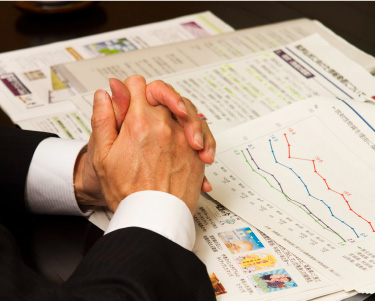
As for the safety of Fukushima agricultural and fisheries products, including the foodstuffs grown there, we have striven to secure food safety and give people a sense of ease with our policy of preventing any products that exceed strict standards [for permissible radioactivity] from entering the market. The latest inspections have shown that not a single product has exceeded such limits, including such staples as rice, vegetables, livestock, mushrooms, fish, and shellfish.
Incidentally, Japan’s inspections employ a standard of 100 becquerels per kilogram for permissible radioactivity, about ten times stricter than those used in the West or the Codex Alimentarius (a collection of internationally recognized standards, codes of practice, guidelines, and other recommendations relating to foods, food production and food safety).
So, confirmation has been made of food safety [in Fukushima], using inspections following extremely strict standards.
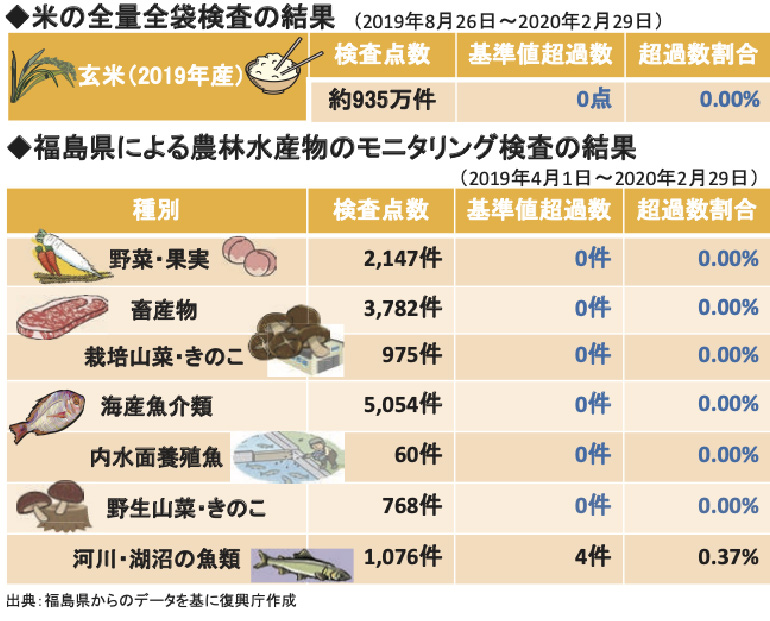
– You are calling for the creation of a “New Tohoku.” What does that mean?
Tobe: The problems of a lower childbirth rate and the graying of society, along with an overall population decline, are structural issues that are not limited to Tohoku, but which affect every region of Japan as a whole. Amidst those circumstances, such structural issues themselves are also being dealt with as part of the efforts toward reconstruction from both the earthquake disaster and the nuclear disaster, aiming at the creation of a region that is both attractive to people and bustling with activity.
The “New Tohoku” Public and Private Partnership Promotion Council has been set up to work toward the restoration of industry and people’s livelihoods, as well as the creation of a regional society and community, through the coordination and collaboration of the residents, municipalities, nonprofit organizations (NPOs), and corporations of disaster-stricken communities, as well as other people, companies, etc. involved in those areas. Its activities include exchange meetings that primarily focus on 1,300 or so organizations, an award system set up to honor those who are actively contributing, and the use of networks to build new added value, along with a business contest and consulting.
It is the stance of the Reconstruction Agency to steadily promote such a vision of New Tohoku, including Fukushima. While I repeat myself, the thinking is to firmly strive toward the relocation and settlement of people into the region, along with the increase of the number of people establishing exchanges and relations
